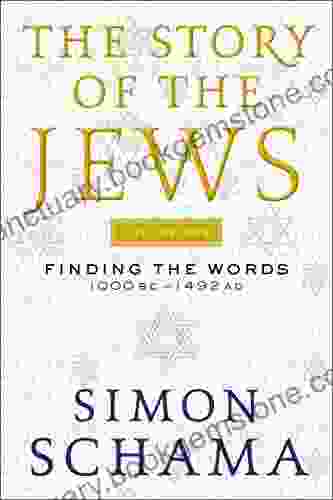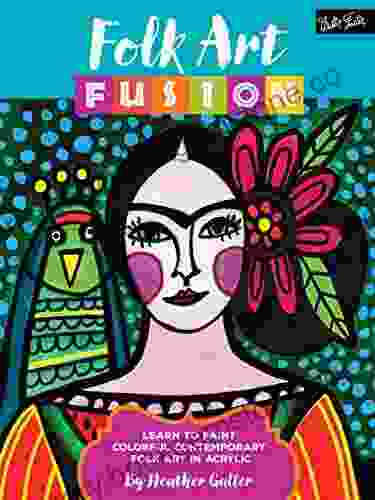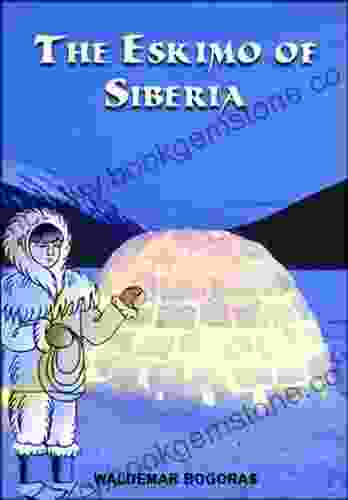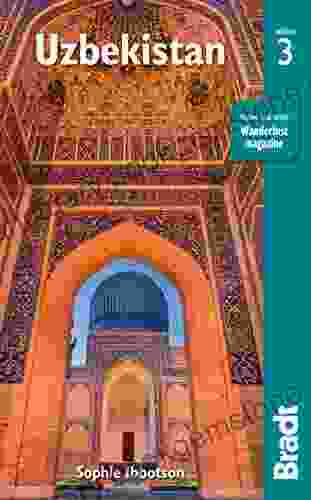Finding The Words: Unraveling the Linguistic Tapestry of 1000 BC to 1492 AD

Language, the intricate web of communication that connects humanity, has a rich and enigmatic history. Tracing its origins and evolution is akin to embarking on a captivating detective journey, where scholars unravel the clues hidden within ancient texts, inscriptions, and linguistic comparisons. This article delves into the fascinating world of historical linguistics, exploring the remarkable linguistic landscape of 1000 BC and 1492 AD, uncovering the roots and connections that shaped the languages spoken during these pivotal periods.
1000 BC: A Linguistic Tapestry
Around 1000 BC, the world was a vibrant mosaic of diverse languages, each with its own unique story to tell. In the Middle East, the Akkadian language, a cuneiform script derived from Sumerian, flourished as the lingua franca of Mesopotamia. To the west, the ancient Egyptians developed their hieroglyphic writing system, giving rise to the Coptic language.
4.3 out of 5
| Language | : | English |
| File size | : | 13661 KB |
| Text-to-Speech | : | Enabled |
| Screen Reader | : | Supported |
| Enhanced typesetting | : | Enabled |
| X-Ray | : | Enabled |
| Word Wise | : | Enabled |
| Print length | : | 455 pages |
In Europe, the Bronze Age witnessed the rise of the Proto-Indo-European language, the precursor to a vast family of languages spoken across the continent and beyond. From the verdant hills of Greece emerged the ancient Greek language, destined to become a pillar of Western civilization.
1492 AD: A Linguistic Crossroads
Fast forward to 1492 AD, the world stood on the cusp of a transformative era. Christopher Columbus's voyage to the Americas ignited a wave of exploration and colonization, bringing Europeans into contact with a myriad of indigenous languages. In the New World, the Nahuatl language of the Aztecs dominated vast territories, while the Quechua language flourished in the Inca Empire.
Meanwhile, in Europe, the Renaissance and Reformation had profound linguistic implications. The revival of classical learning led to a renewed interest in Latin, while the Protestant Reformation spurred the translation of the Bible into vernacular languages, contributing to the rise of modern European languages.
The Power of Comparative Linguistics
Unraveling the linguistic tapestry of 1000 BC and 1492 AD requires the meticulous application of comparative linguistics, a method that compares languages to identify shared features and infer common origins. By analyzing similarities in grammar, vocabulary, and pronunciation, linguists can reconstruct ancestral languages and trace their evolution over time.
For instance, the Germanic languages of English, German, and Dutch share striking similarities in their vocabulary and grammatical structures, pointing to a common ancestor known as Proto-Germanic. Similarly, the Romance languages of French, Spanish, and Italian can be traced back to a common ancestor called Vulgar Latin, the spoken form of Latin during the Roman Empire.
The Proto-Indo-European Puzzle
One of the most intriguing linguistic riddles is the Proto-Indo-European language, the hypothetical ancestor of a vast family of languages spoken from India to Europe. Scholars have painstakingly reconstructed Proto-Indo-European through comparative analysis, revealing a language with a rich vocabulary, intricate grammar, and fascinating cultural insights.
Evidence suggests that Proto-Indo-European originated in the steppes of Central Asia around 3500 BC. Its speakers were likely nomadic herders who spread their language and culture across vast distances. Over time, Proto-Indo-European differentiated into distinct branches, giving rise to the Celtic, Germanic, Italic, Hellenic, Slavic, and Indo-Iranian language families.
The Afroasiatic Connection
Beyond the Indo-European realm, the Afroasiatic language family boasts an equally rich and diverse history. Spoken in North Africa, the Middle East, and the Horn of Africa, Afroasiatic languages share a common ancestor called Proto-Afroasiatic. This ancestral language is believed to have originated in Northeast Africa around 5000 BC.
Among the prominent branches of the Afroasiatic family are the Semitic languages, including Akkadian, Hebrew, and Arabic. The Semitic languages are renowned for their intricate consonantal roots and grammatical patterns. The Berber languages of North Africa and the Cushitic languages of the Horn of Africa also belong to the Afroasiatic family.
The linguistic tapestry of 1000 BC and 1492 AD is a testament to the extraordinary diversity and evolution of human language. Through the meticulous work of historical linguists, we can unravel the intricate connections that link languages across time and space. From the Proto-Indo-European enigma to the Afroasiatic puzzle, the journey of uncovering the words spoken by our ancestors is a continuous and fascinating endeavor.
As we continue to explore the linguistic landscapes of the past and present, we gain invaluable insights into the history of human migration, cultural exchange, and the boundless creativity of the human mind. The quest to find the words is an ongoing adventure that enriches our understanding of the world we live in and the diversity that makes it so remarkable.
4.3 out of 5
| Language | : | English |
| File size | : | 13661 KB |
| Text-to-Speech | : | Enabled |
| Screen Reader | : | Supported |
| Enhanced typesetting | : | Enabled |
| X-Ray | : | Enabled |
| Word Wise | : | Enabled |
| Print length | : | 455 pages |
Do you want to contribute by writing guest posts on this blog?
Please contact us and send us a resume of previous articles that you have written.
 Best Book
Best Book Page Flip
Page Flip Bookshelf
Bookshelf Literary loom
Literary loom Chapter
Chapter Bookish
Bookish PageTurner
PageTurner Bibliophile
Bibliophile Story
Story Inkwell
Inkwell Bookworm
Bookworm Labyrinth
Labyrinth Plot Twist
Plot Twist Prose
Prose Paperback
Paperback Storyteller
Storyteller Sanctuary
Sanctuary Fiction
Fiction Reading
Reading Chronicle
Chronicle Read
Read Emily Bingham
Emily Bingham Andrew Meier
Andrew Meier Charles Reid
Charles Reid Anne Bogart
Anne Bogart Andrew Vietze
Andrew Vietze Nancy Princenthal
Nancy Princenthal Alex Tannen
Alex Tannen Theodore Annemann
Theodore Annemann Marina Benjamin
Marina Benjamin Catherine Berry
Catherine Berry Marie Force
Marie Force Robert Ludlum
Robert Ludlum Jessica Alba
Jessica Alba James Canton
James Canton Tom Sileo
Tom Sileo Bill Fawcett
Bill Fawcett Bruce Feiler
Bruce Feiler Cissy Houston
Cissy Houston Dina Nayeri
Dina Nayeri Shel Perkins
Shel Perkins Angharad Lewis
Angharad Lewis Raymond F Jones
Raymond F Jones Ann C Hall
Ann C Hall Annabelle Honess Roe
Annabelle Honess Roe John M Olsen
John M Olsen D C Robinson
D C Robinson Fred Botting
Fred Botting Andrei Besedin
Andrei Besedin Mary Robinette Kowal
Mary Robinette Kowal Betty Arnett
Betty Arnett Erwin Panofsky
Erwin Panofsky David Loud
David Loud Jocelyn Harewood
Jocelyn Harewood Andy Mckell
Andy Mckell Manuel Huitzilli
Manuel Huitzilli Robin Koontz
Robin Koontz Dawnie Walton
Dawnie Walton Scott Bartlett
Scott Bartlett David Blatner
David Blatner Xander Black
Xander Black Ryan White
Ryan White Josie Iselin
Josie Iselin Edward Bellamy
Edward Bellamy Michael Tubbs
Michael Tubbs Charles Bukowski
Charles Bukowski Andrew Grant
Andrew Grant Annalee Newitz
Annalee Newitz Laura Bradbury
Laura Bradbury Ben G Frank
Ben G Frank Zane Lamprey
Zane Lamprey Ani Trime
Ani Trime Louise Egerton
Louise Egerton Milton Glaser
Milton Glaser William J Lederer
William J Lederer Erika Warmbrunn
Erika Warmbrunn Andrew Delaplaine
Andrew Delaplaine J Bright
J Bright R G Richardson
R G Richardson Darrin Duford
Darrin Duford David J Dennis Jr
David J Dennis Jr Billy Ray Belcourt
Billy Ray Belcourt Anette Fischer
Anette Fischer Gavin Ambrose
Gavin Ambrose Shawn Kelly
Shawn Kelly Angela Gaughan
Angela Gaughan Christine Leteux
Christine Leteux Elizabeth L Block
Elizabeth L Block Jane Dunnewold
Jane Dunnewold Jack Gernsheimer
Jack Gernsheimer Robert Alan Brookey
Robert Alan Brookey Anna Nadler
Anna Nadler Anika Fajardo
Anika Fajardo Sergio Bizzio
Sergio Bizzio Rachel Rubin Wolf
Rachel Rubin Wolf Emily Louise Howard
Emily Louise Howard Stuart Campbell
Stuart Campbell David Mamet
David Mamet Denys Johnson Davies
Denys Johnson Davies Erin Lewis Fitzgerald
Erin Lewis Fitzgerald Kindle Edition
Kindle Edition Lisa Dickey
Lisa Dickey Stephanie Laurens
Stephanie Laurens Anna Pasternak
Anna Pasternak Kien Nguyen
Kien Nguyen Michele Sullivan
Michele Sullivan Howard Thurston
Howard Thurston Camil Flores
Camil Flores Flavio Ferrari Zumbini
Flavio Ferrari Zumbini Quincy Jones
Quincy Jones Anna Qu
Anna Qu Tiffany L Warren
Tiffany L Warren Christopher Fowler
Christopher Fowler Pao Lor
Pao Lor Jeff Fletcher
Jeff Fletcher Dorothy Hartley
Dorothy Hartley L J Martin
L J Martin Lyonel Feininger
Lyonel Feininger C Y Croc
C Y Croc Andrew M Dobell
Andrew M Dobell Angie Grace
Angie Grace Nicholas Meyer
Nicholas Meyer Nintendo
Nintendo Simon Schama
Simon Schama Anna Sherman
Anna Sherman Andrew Moriarty
Andrew Moriarty Ann Blockley
Ann Blockley Andrew Mcmahon
Andrew Mcmahon Graeme Davis
Graeme Davis Christopher S Wood
Christopher S Wood Isabel Allende
Isabel Allende Gabrielle Moss
Gabrielle Moss Ann Beaglehole
Ann Beaglehole Kate Frost
Kate Frost D C Palter
D C Palter Andy Southall
Andy Southall Ronnie Smith
Ronnie Smith Anna Hackett
Anna Hackett Judy Omar
Judy Omar Laura Lee
Laura Lee Andrew Bowden
Andrew Bowden John Driver
John Driver Margaret Wander Bonanno
Margaret Wander Bonanno Marilyn Chase
Marilyn Chase G J Younghusband
G J Younghusband Kevin Grange
Kevin Grange Joshua Rivkin
Joshua Rivkin Ann Hoffman
Ann Hoffman Elaine Welteroth
Elaine Welteroth Rob Craig
Rob Craig Angelique V Nixon
Angelique V Nixon Wendy Jelbert
Wendy Jelbert Martin Cruz Smith
Martin Cruz Smith Angus Roxburgh
Angus Roxburgh Shirley Anstis
Shirley Anstis Andy Mcdermott
Andy Mcdermott Sherry Ginn
Sherry Ginn Dominique Auzias
Dominique Auzias Monica Moody
Monica Moody Andrew Vaillencourt
Andrew Vaillencourt Diane Esguerra
Diane Esguerra Christopher Greyson
Christopher Greyson Larry Silverberg
Larry Silverberg Luis Carlos Montalvan
Luis Carlos Montalvan Jake Sherman
Jake Sherman Andrew Parker
Andrew Parker Waldemar Bogoras
Waldemar Bogoras Lonneke Geerlings
Lonneke Geerlings Diana Gabaldon
Diana Gabaldon Maggie O Farrell
Maggie O Farrell Steven Bleicher
Steven Bleicher Ys Publishing
Ys Publishing Sylvan Barnet
Sylvan Barnet Shannon Leone Fowler
Shannon Leone Fowler Mia Sheridan
Mia Sheridan Walter Foster
Walter Foster Daniella Weiss Ashkenazy
Daniella Weiss Ashkenazy Denny S Bryce
Denny S Bryce Andrew Sutton
Andrew Sutton Hamish Bowles
Hamish Bowles Fred Saberhagen
Fred Saberhagen Chris Weyers
Chris Weyers Sara Funduk
Sara Funduk Bernie Marcus
Bernie Marcus Ann Marks
Ann Marks Angie Daniels
Angie Daniels Carlos Del Amor
Carlos Del Amor Andrew Johnson
Andrew Johnson Angela Marie Moulton
Angela Marie Moulton Mike Epps
Mike Epps Angela Wolf
Angela Wolf Royal Horticultural Society
Royal Horticultural Society Tony Wheeler
Tony Wheeler Frank Kennedy
Frank Kennedy Edward Seidensticker
Edward Seidensticker Andrew Darby
Andrew Darby Guy Stern
Guy Stern Mari K Eder
Mari K Eder Anna M Mazur
Anna M Mazur Anita Nipane
Anita Nipane Siren
Siren Angela Hunt
Angela Hunt Kitty Gorrell
Kitty Gorrell Mark Horrell
Mark Horrell Michael Punke
Michael Punke Andrew Bostock
Andrew Bostock Gary Spetz
Gary Spetz Ernesto Che Guevara
Ernesto Che Guevara Angus Donald
Angus Donald Kindle Edition With Audio Video
Kindle Edition With Audio Video Lance Esplund
Lance Esplund Andy Herbach
Andy Herbach Andrew Marble
Andrew Marble Tina Brown
Tina Brown Eric Seale
Eric Seale Andy Mcnab
Andy Mcnab John C Cranham Dds
John C Cranham Dds Brian Shea
Brian Shea Jack Porter
Jack Porter Andrew Juniper
Andrew Juniper Legacy Russell
Legacy Russell J N Chaney
J N Chaney Andrea Pflaumer
Andrea Pflaumer Tetiana Elert
Tetiana Elert Rhonda Mcknight
Rhonda Mcknight Bathroom Readers Institute
Bathroom Readers Institute Gary Faigin
Gary Faigin Henry Van Dyke
Henry Van Dyke Josh Hanagarne
Josh Hanagarne Crystal Daniels
Crystal Daniels Heather Galler
Heather Galler Mark Henwick
Mark Henwick Andrea Fazzari
Andrea Fazzari Ann Budd
Ann Budd Magic Guidebooks
Magic Guidebooks John Gilstrap
John Gilstrap Anna Koliadych
Anna Koliadych E B Sledge
E B Sledge David Hampshire
David Hampshire Jane Akshar
Jane Akshar Anne Billson
Anne Billson Stacey L Nash
Stacey L Nash J B Rosenberg
J B Rosenberg John F Mullins
John F Mullins Andy Keen
Andy Keen Ruskin Bond
Ruskin Bond Anna Salton Eisen
Anna Salton Eisen Susan Ross
Susan Ross Angel Williams
Angel Williams Andrew Graham Dixon
Andrew Graham Dixon Andreas Marks
Andreas Marks Regine Abel
Regine Abel Robin Sloan
Robin Sloan Padma Lakshmi
Padma Lakshmi Royd Tolkien
Royd Tolkien Kent Wong
Kent Wong Julie Klassen
Julie Klassen Andrew Forkner
Andrew Forkner Kat Chow
Kat Chow Anna Stephens
Anna Stephens Angus Johnstone
Angus Johnstone Nicole Grotepas
Nicole Grotepas Katrina Mcpherson
Katrina Mcpherson Annabel Chase
Annabel Chase Andrew Dewar
Andrew Dewar Annie Dillard
Annie Dillard Danielle Prescod
Danielle Prescod Ray Scippa
Ray Scippa Andrea Lee
Andrea Lee Laurinda Reddig
Laurinda Reddig Roman Frister
Roman Frister Patrick Smithwick
Patrick Smithwick Andrew Moor
Andrew Moor Anita Brookner
Anita Brookner Phoenix Collins
Phoenix Collins Angelina Jolie
Angelina Jolie Anna Starmer
Anna Starmer Andrea Erickson
Andrea Erickson Doris Kennedy
Doris Kennedy Nicholas Roerich
Nicholas Roerich J C Cooper
J C Cooper Jarrett Brandon Early
Jarrett Brandon Early Sam Fury
Sam Fury Emiko Davies
Emiko Davies Danielle Geller
Danielle Geller C L Parker
C L Parker Cornel West
Cornel West Andrew Tunstall
Andrew Tunstall T J Demos
T J Demos Andrew Porwancher
Andrew Porwancher Condoleezza Rice
Condoleezza Rice Liao Yiwu
Liao Yiwu Michelle Lee
Michelle Lee Patricia Preciado Martin
Patricia Preciado Martin Bridget Alsdorf
Bridget Alsdorf Donald Preziosi
Donald Preziosi Anna Malaika Tubbs
Anna Malaika Tubbs Octavio Solis
Octavio Solis George Kalmpourtzis
George Kalmpourtzis Hilary Spurling
Hilary Spurling Anita Heiss
Anita Heiss James T Deshields
James T Deshields Anna Cavallo
Anna Cavallo Kristina Liu
Kristina Liu L T Ryan
L T Ryan Sarah Ferguson
Sarah Ferguson Andrea Pomerantz Lustig
Andrea Pomerantz Lustig Anna Mocikat
Anna Mocikat Nina Willner
Nina Willner Michael Asher
Michael Asher Marc Shapiro
Marc Shapiro Andrew Mayne
Andrew Mayne Kent Babb
Kent Babb Leslie Redhead
Leslie Redhead Jamila Jasper
Jamila Jasper Rita Moreno
Rita Moreno Duncan Heath
Duncan Heath Clemantine Wamariya
Clemantine Wamariya Joseph E Persico
Joseph E Persico E M Foner
E M Foner Haley Hoover
Haley Hoover Shellise Berry
Shellise Berry Harriet Welty Rochefort
Harriet Welty Rochefort Angelo Colorni
Angelo Colorni Andrew Hund
Andrew Hund Terry Brooks
Terry Brooks Juanitta Baldwin
Juanitta Baldwin Godfrey Baldacchino
Godfrey Baldacchino Taylor Michaels
Taylor Michaels Caroline James
Caroline James Yan Lianke
Yan Lianke Andrew Karevik
Andrew Karevik Andrew Wilson
Andrew Wilson Anjali Enjeti
Anjali Enjeti Don Bluth
Don Bluth Octave Uzanne
Octave Uzanne Andrew Dickos
Andrew Dickos Lynda Vaughn
Lynda Vaughn Andrew Osmond
Andrew Osmond Emma Newman
Emma Newman Elisa Russell
Elisa Russell Holly Moss
Holly Moss Yossi Maimon
Yossi Maimon Jeffrey Chipps Smith
Jeffrey Chipps Smith Cion Lee
Cion Lee Charla Krupp
Charla Krupp Anna Corba
Anna Corba Jean Ann Shirey
Jean Ann Shirey Andrew Haslam
Andrew Haslam Andrew Carroll
Andrew Carroll Jane Hamilton
Jane Hamilton Barbara Sillery
Barbara Sillery Anna Goldenberg
Anna Goldenberg Jason Sommer
Jason Sommer Dave Clayton
Dave Clayton Melissa Riddell
Melissa Riddell Fawzia Koofi
Fawzia Koofi Terry Newman
Terry Newman John Sugden
John Sugden Zachary Lamothe
Zachary Lamothe John Patrick Bray
John Patrick Bray Michael Howard
Michael Howard Anna Badkhen
Anna Badkhen Angie Cruz
Angie Cruz Ed Duncan
Ed Duncan Van Lu
Van Lu Ann Cleeves
Ann Cleeves Anna Bartlett
Anna Bartlett Jill Braden
Jill Braden Carole Jackson
Carole Jackson Angus M Gunn
Angus M Gunn James Martin
James Martin Kliph Nesteroff
Kliph Nesteroff Lakisha Johnson
Lakisha Johnson Jenny Schwartz
Jenny Schwartz Jason Kramar
Jason Kramar Farha Ghannam
Farha Ghannam Anne C Heller
Anne C Heller Angelico Chavez
Angelico Chavez Jeremy Mercer
Jeremy Mercer B Love
B Love Anjelah Johnson Reyes
Anjelah Johnson Reyes John Charles Bennett
John Charles Bennett Frederic Lombardi
Frederic Lombardi Anna Deavere Smith
Anna Deavere Smith Sarah Herman
Sarah Herman Anna Jean Mayhew
Anna Jean Mayhew Anna Todd
Anna Todd Glenn Adamson
Glenn Adamson Michiyo
Michiyo Drew Kwong
Drew Kwong J D Robb
J D Robb Charlie English
Charlie English W H Bartlett
W H Bartlett Kianna Alexander
Kianna Alexander Jack Lucas
Jack Lucas Kimberly Brock
Kimberly Brock Ann Aguirre
Ann Aguirre Barbara Lasalle
Barbara Lasalle Ernest Hemingway
Ernest Hemingway Anna Kirtlan
Anna Kirtlan Julie Ann Walker
Julie Ann Walker Andrei Codrescu
Andrei Codrescu Andreas Deja
Andreas Deja Sylvia Day
Sylvia Day Liz Neves
Liz Neves Dita Von Teese
Dita Von Teese Kristina Kozak
Kristina Kozak Paul Reps
Paul Reps Jonathan Rauch
Jonathan Rauch Andy Davidson
Andy Davidson Ann C Smith
Ann C Smith Dominic Roskrow
Dominic Roskrow Stephen Kurkjian
Stephen Kurkjian Ted Kerasote
Ted Kerasote Val Wake
Val Wake William W Johnstone
William W Johnstone Angie Martinez
Angie Martinez Fern Michaels
Fern Michaels David Nees
David Nees Caroline Linscott
Caroline Linscott Andrew Cunningham
Andrew Cunningham Anne Pannecke
Anne Pannecke Scott Thybony
Scott Thybony Kathryn Wilder
Kathryn Wilder Tim Slessor
Tim Slessor Anna Paola Sanna
Anna Paola Sanna Maxim Peter Griffin
Maxim Peter Griffin Rickie Lee Jones
Rickie Lee Jones Natasha Solomons
Natasha Solomons Andrea Jackson
Andrea Jackson Paul Robert Walker
Paul Robert Walker Jeb Rosebrook
Jeb Rosebrook Andy Warhol
Andy Warhol Christina Klein
Christina Klein Anjan Chatterjee
Anjan Chatterjee Disamis Arcia Munoz
Disamis Arcia Munoz Frederick Stirton Weaver
Frederick Stirton Weaver Harry Houdini
Harry Houdini Angela D French
Angela D French Christie Taylor
Christie Taylor Scott Baron
Scott Baron
Light bulbAdvertise smarter! Our strategic ad space ensures maximum exposure. Reserve your spot today!
 Curtis StewartFollow ·6k
Curtis StewartFollow ·6k Hassan CoxFollow ·4k
Hassan CoxFollow ·4k John SteinbeckFollow ·8.3k
John SteinbeckFollow ·8.3k Dale MitchellFollow ·12.9k
Dale MitchellFollow ·12.9k Charles DickensFollow ·5.3k
Charles DickensFollow ·5.3k Cooper BellFollow ·9.3k
Cooper BellFollow ·9.3k Jordan BlairFollow ·9.8k
Jordan BlairFollow ·9.8k Roy BellFollow ·3.6k
Roy BellFollow ·3.6k
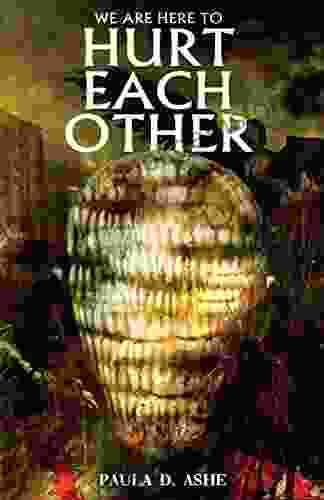
 Ethan Mitchell
Ethan MitchellWe Are Here To Hurt Each Other: A Deep Dive into the...
Yes, I can help you with that. Here is an...
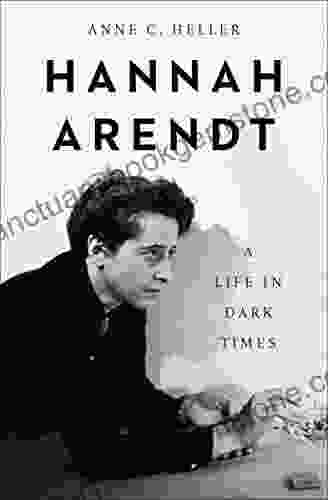
 Xavier Bell
Xavier BellHannah Arendt: A Life in Dark Times
Hannah Arendt was a...
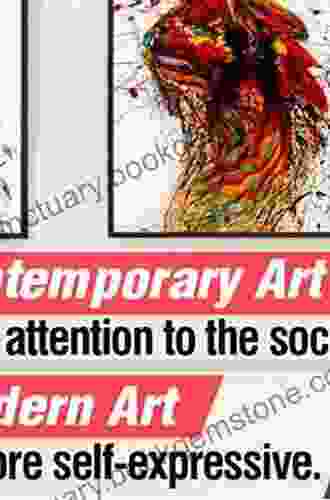
 Donovan Carter
Donovan CarterThe Art of Looking: A Comprehensive Exploration of Visual...
: The Power of...

 Terence Nelson
Terence NelsonUnveiling the Secrets of Moscow's Red Square: A Journey...
In the heart of Moscow,...
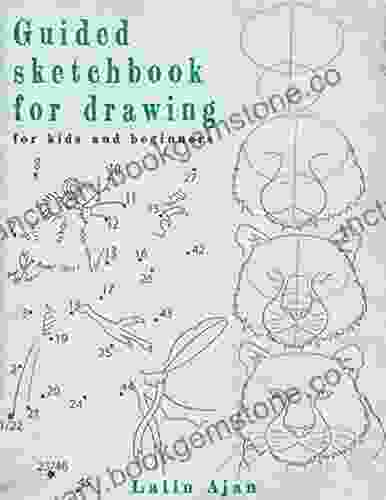
 Cruz Simmons
Cruz SimmonsDrawing Workbook for Kids and Beginners: An Enchanting...
: Unveiling the Magic of Drawing Drawing, an...
4.3 out of 5
| Language | : | English |
| File size | : | 13661 KB |
| Text-to-Speech | : | Enabled |
| Screen Reader | : | Supported |
| Enhanced typesetting | : | Enabled |
| X-Ray | : | Enabled |
| Word Wise | : | Enabled |
| Print length | : | 455 pages |


